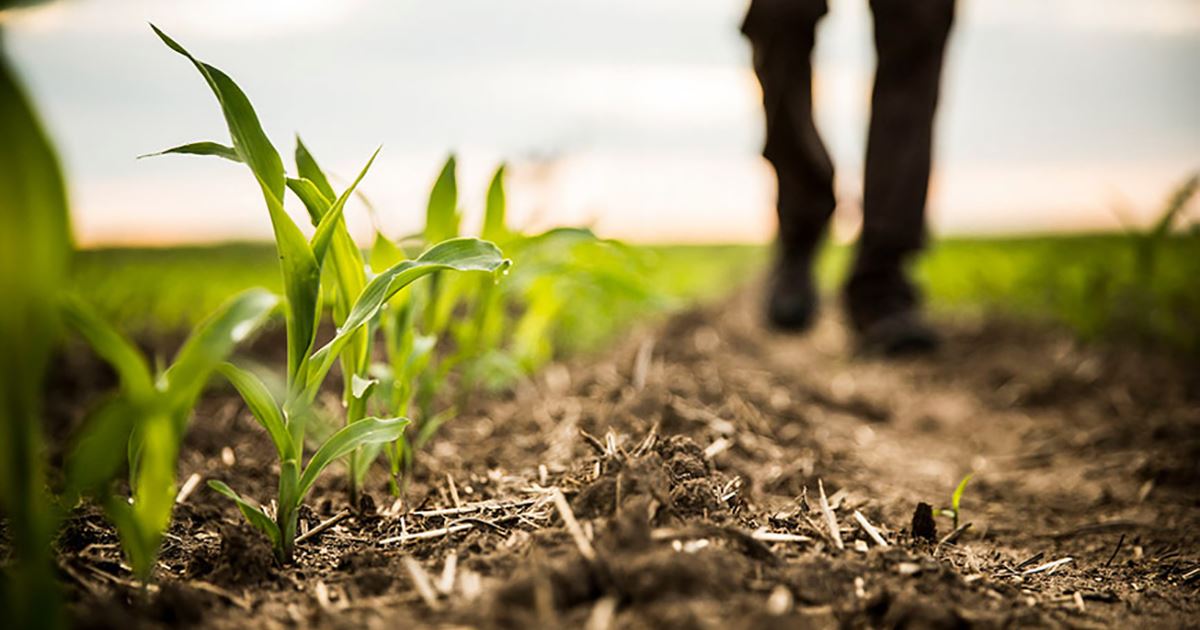Fine Tuning Nutrient Management
May 15, 2020
Megan Hasenour | Marketing Communications Manager

Cut, cut, cut… there is chatter amongst growers this year about trying to cut “extra expenses”. Here’s the problem. What’s an “extra expense” and what’s a good investment? The worst thing you can do is cut $20 in “expenses” and lose $40 in yield.
Whether you cut this year or not, we recommend you to schedule tissue testing throughout the growing season to identify the exact hidden hungers in your fields. Tissue testing at critical crop growth stages can help fine-tune nutrient management, boost overall plant growth and maximize yields.
• Tissue testing indicates nutrient levels within the plant at that given growth stage. Superior Ag utilizes WinField United’s proprietary NutriSolutions® tissue testing and analyses pinpoint nutrient deficiencies at critical growth stages so you can make adjustments before yield potential is compromised.
• More than 450,000 tissue samples taken have proven that farmers can identify deficiencies and adjust plant nutrient levels at critical stages. Only tissue testing can determine which available nutrients have entered the plant and measure their effectiveness.
• MAX-IN® micronutrients mix easily with other crop protection products, including glyphosate, and can be used on a broad spectrum of crops to fuel in-season plant growth and development. CornSorb® technology drives micronutrients through the waxy leaf cuticle and into plant cells to help increase uptake.
• The R7® Tool combines satellite imagery with local seed and crop protection data to generate valuable field performance information.
• In-season satellite imagery of biomass and field GPS mapping with the R7® Tool will identify deficient areas in the field for more targeted NutriSolutions® tissue testing and plant analyses. NutriSolutions® tissue data is imported into the R7® Tool for a complete review of current and previous years to help farmers plan for the next season.
• Analyzing different nutrient levels can help determine the cause of biomass variances, which is directly related to yield potential at the end of the season.
• Frequent sampling creates accuracy because soil pH, fertilizer rate, soil compaction, nematodes and other factors can influence nutrient use and uptake, plant tissue concentrations can change during the growing season. In order to detect these changes, take at least three tissue samples throughout the season to make an accurate yearlong assessment of plant nutrient needs.

Cut, cut, cut… there is chatter amongst growers this year about trying to cut “extra expenses”. Here’s the problem. What’s an “extra expense” and what’s a good investment? The worst thing you can do is cut $20 in “expenses” and lose $40 in yield.
Whether you cut this year or not, we recommend you to schedule tissue testing throughout the growing season to identify the exact hidden hungers in your fields. Tissue testing at critical crop growth stages can help fine-tune nutrient management, boost overall plant growth and maximize yields.
• Tissue testing indicates nutrient levels within the plant at that given growth stage. Superior Ag utilizes WinField United’s proprietary NutriSolutions® tissue testing and analyses pinpoint nutrient deficiencies at critical growth stages so you can make adjustments before yield potential is compromised.
• More than 450,000 tissue samples taken have proven that farmers can identify deficiencies and adjust plant nutrient levels at critical stages. Only tissue testing can determine which available nutrients have entered the plant and measure their effectiveness.
• MAX-IN® micronutrients mix easily with other crop protection products, including glyphosate, and can be used on a broad spectrum of crops to fuel in-season plant growth and development. CornSorb® technology drives micronutrients through the waxy leaf cuticle and into plant cells to help increase uptake.
• The R7® Tool combines satellite imagery with local seed and crop protection data to generate valuable field performance information.
• In-season satellite imagery of biomass and field GPS mapping with the R7® Tool will identify deficient areas in the field for more targeted NutriSolutions® tissue testing and plant analyses. NutriSolutions® tissue data is imported into the R7® Tool for a complete review of current and previous years to help farmers plan for the next season.
• Analyzing different nutrient levels can help determine the cause of biomass variances, which is directly related to yield potential at the end of the season.
• Frequent sampling creates accuracy because soil pH, fertilizer rate, soil compaction, nematodes and other factors can influence nutrient use and uptake, plant tissue concentrations can change during the growing season. In order to detect these changes, take at least three tissue samples throughout the season to make an accurate yearlong assessment of plant nutrient needs.